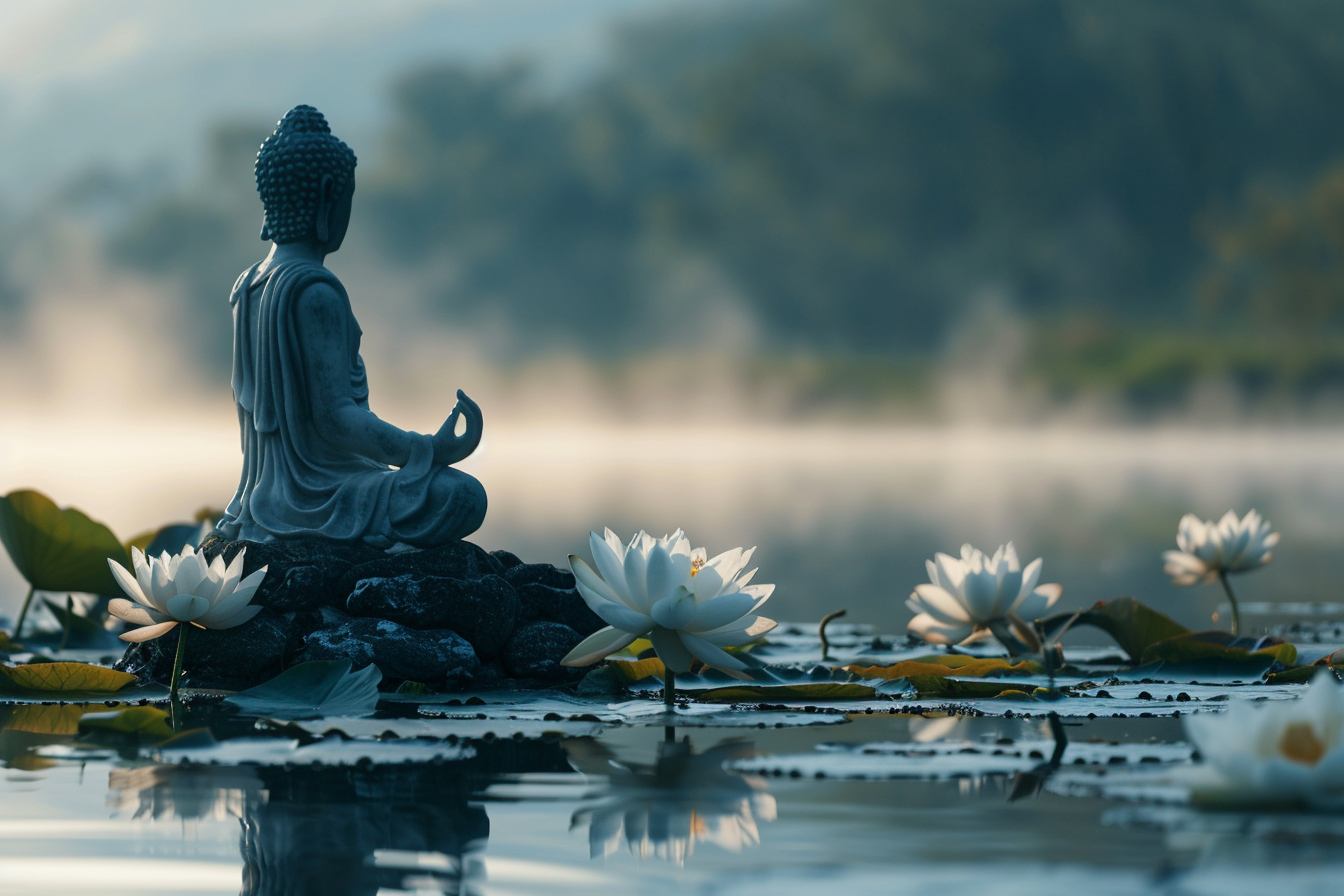Meditation, a practice that dates back thousands of years, continues to be acclaimed for its numerous benefits, including stress reduction, improved concentration, and enhanced well-being. Sanskrit mantra meditation takes these benefits a step further by incorporating sacred sounds, believed to have transformative powers. Sanskrit, an ancient language of India, is often referred to as the language of the Gods, and it plays a pivotal role in various spiritual practices, including yoga and meditation.
Understanding sanskrit mantras
Mantras are strings of sounds that, when articulated, can impact the human system profoundly. The Sanskrit word ‘mantra’ is derived from ‘manas’, meaning mind, and ‘tra’, implying tool or instrument. A mantra, therefore, is a powerful sound tool that helps in controlling and elevating the mind.
Each Sanskrit mantra encapsulates a certain vibration that corresponds to specific aspects of the human experience and the universe. Chanting these mantras in meditation is believed to release their inherent energy, harmonizing the body and the mind with the rhythms of the cosmos.
The science behind mantra meditation
The therapeutic impact of mantra meditation on mental health often intrigues modern science. Research suggests that the repetitive nature of mantra chanting can decrease the activity in the default mode network (DMN) of the brain, the area responsible for mind-wandering and self-referential thoughts often associated with unhappiness and stress.
Furthermore, the rhythmic patterns of the sounds can have a calming effect on the nervous system, leading to deeper relaxation. As a result, practitioners of mantra meditation often report experiences of tranquility and a sense of unity with the universe.
Significance of vocal resonance
Vocal resonance is an intrinsic part of Sanskrit mantra meditation. The act of chanting can serve as a conduit to unite one’s voice with body and mind. The vibrations produced by vocalizing these mantras resonate throughout the body. This resonance can stimulate and balance the various energy centers, or chakras, situated along the spine.
The chakras and mantras
In the yogic tradition, each chakra is associated with specific Sanskrit mantras. As an example, the root chakra, located at the base of the spine, corresponds to the mantra “Lam”. When chanted, it is intended to enhance a sense of grounding and security.
Traditional sanskrit mantras
Several traditional Sanskrit mantras are widely used in meditative practices across the world. Some of the most renowned include:
- Om: Often considered the primal sound, "Om" is the universal syllable that embodies all sounds and creation.
- So Hum: This mantra translates to "I am That" and is used to identify oneself with the universe or ultimate reality.
- Om Namah Shivaya: This powerful mantra means "I bow to Shiva," the supreme reality.
- Om Mani Padme Hum: In translation, "the jewel is in the lotus." This mantra encapsulates the journey to enlightenment.
Preparing for sanskrit mantra meditation
Before delving into the practice, preparing the mind and body is essential. A quiet space free from disturbances can help in focusing the mind. Comfortable clothing and a seated position, either on a cushion or a chair, can aid in maintaining a proper posture for prolonged periods. It is recommended to start with a few minutes of silence to settle the mind before beginning the chant.
Breathing techniques
Breath control is a fundamental aspect of entering a meditative stance. Techniques such as diaphragmatic breathing, where the breath is drawn deeply into the belly, can help in achieving a relaxed state. Once a steady breath is established, one can initiate the chanting of the chosen mantra in coordination with the inhalation and exhalation.
The art of chanting
Chanting is not simply reading or singing; it is a full-bodied practice. Pronunciation is crucial, for it is through the accurate articulation of Sanskrit sounds that the mantras reach their full potential. Maintaining a consistent rhythm and volume allows the mind to focus on the sound and vibration of the mantra, thereby enhancing the meditative experience.
Japa meditation
A common method of Sanskrit mantra meditation is Japa, which involves the repetitive recitation of a mantra. Traditionally, a string of beads, known as a mala, is used to keep count, with 108 beads being particularly significant in many spiritual traditions.
Group vs. solo practice
While many practitioners enjoy the collective energy of group meditation, mantra meditation is also highly personal and can be practiced individually. The experience of chanting in a group can create a unified resonance, amplifying the vibrational impact. Conversely, solo practice provides the freedom to personalize the pace and intensity.
Deepening the meditation experience
To deepen the meditation, one might focus on the meaning and spiritual significance of the mantra. Contemplating the symbolic attributes can create a richer experience. Additionally, visualizations, such as picturing the flow of energy within the body or visualizing light, can augment the sense of tranquility and focus.
Integrating music
Music and instrumental accompaniments are sometimes included in Sanskrit mantra meditation. The use of gentle music can support the rhythm of chanting, although ensuring the music does not overpower the mantra is key. The goal is to enhance the meditative ambiance without distracting from the primary focus of the mantra.
Overcoming challenges in practice

It is common to encounter distractions or restlessness during meditation. When faced with such challenges, gently guiding the attention back to the sound of the mantra without self-judgment can be beneficial. Regular practice is essential in cultivating a stable meditation routine. Like any skill, proficiency in Sanskrit mantra meditation arises from patience and persistent practice.
Adjusting to personal needs
Given the diversity of Sanskrit mantras, selecting one that resonates personally can have a profound impact on the practitioner’s experience. It is essential to listen to the body and mind and make adjustments as needed. Some individuals might be drawn to the simplicity of "Om," while others may connect with a more complex mantra. The practice should authentically reflect the individual’s journey.
Adapting mantra meditation to modern life

In today’s fast-paced world, integrating mantra meditation can seem daunting. Nonetheless, it is possible to adopt this ancient practice into daily routines. Setting aside a few minutes each day for mantra meditation can serve as a powerful antidote to stress and anxiety. Even during breaks or while commuting, one can mentally recite mantras, harnessing their grounding effects.
Applications beyond meditation
The sacred sounds of Sanskrit mantras are not confined solely to formal meditation. They can be incorporated into daily affirmations, yoga practices, and even artistic expressions like calligraphy or painting. The versatility of these mantras allows them to infuse life with a touch of serenity and mindfulness in multiple dimensions.
The journey of inner tranquility
Sanskrit mantra meditation presents a path to inner peace, bridging the gap between the ancient and the modern. It invites individuals to explore the depths of their consciousness through sound and vibration. Embracing this practice can lead to experiences beyond the ordinary constraints of the cognitive mind, unlocking a state of serenity that permeates all aspects of life.
As practitioners continue on this path, the subtleties and nuances of the practice are bound to unfold, revealing layers of profound tranquility and connection. The journey is endless, and the depths to which one can explore are boundless. With each chant and each breath, new insights can emerge, enriching the quest for inner tranquility.
With thoughtful engagement and an open heart, the timeless practice of Sanskrit mantra meditation stands as a beacon of calm in the tumultuous sea of daily existence. Dive into its depths, and you may find a treasure trove of peace waiting within.

Leave a Reply